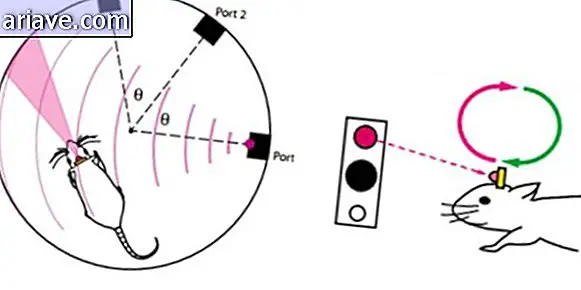How do isolation tanks work?
Perhaps the reference of most people's isolation tanks is still that famous episode of The Simpsons. No problem, since the concept is the same - though without the part where the protagonist descends down the boxed slope.
The fact is, however, that this 1950s invention has changed, although it is still widely used in relaxation and meditation sessions - and may lead to alternative states of consciousness.
Originally called the “sensory deprivation tank, ” the apparatus was designed by neuroscientist John C. Lilly in 1954 and, as the name implies, aimed to study the effects of sensory deprivation on the human brain - until that time there was a current who believed that shutting down the organ from the outside world would cause the subject to sleep, a hypothesis that emerged from various experiments involving psychotropic drugs (such as LSD).
How it works
Although it has changed over the centuries, the fundamental principle of isolation tank operation has not changed much. Basically, you are placed in a camera isolated (as far as possible) from any light or sound source.

This “hermetically sealed bath” has part of its internal space occupied by highly salinized water (with Epsom Salt) - whose density makes the body always stay on the surface.
Additionally, the internal temperature of the tank is maintained at 34 degrees Celsius. By representing the average temperature of human skin, this condition has the effect of “clouding” in consciousness the boundaries between the surrounding environment and the body itself. To some extent, the experience is compared to that caused by the absence of gravity.
First model involved full immersion
It is true that the original version of the isolation tank was somewhat different from the current one. The first model developed by Lilly, for example, placed the user completely submerged in water - such that a mask with a vent was required. Later, the mask was abandoned, as some users said its use led to distractions.

What really happens in there?
Although the physical and biological issues surrounding the experience with sensory deprivation tanks are reasonably objective, the same cannot be said of the experience within the tank - which can vary considerably from person to person.
The inventor of the tank himself said, in fact, that deprivation made contact with parallel universes possible - much like Walter Bishop, the protagonist of the Fringe TV series. Lilly said the tank allowed him to come in contact with creatures of other dimensions, with civilizations "far more advanced" than ours. The scientist referred to the first encounter with entities of other dimensions as "the first conference of three beings."

However, it would be a mistake to question Lilly's rationality from just her accounts inside the tank. After all, the neuroscientist was a pioneer in the field of brain stimulation through electric charges - having been the first to map the pathways taken by sensations of "pain" and "pleasure" in the brain. The subject also became known for his exploration of interspecies communication involving humans, dolphins and whales.
Meditation-like effects
But truth be told, the multidimensional experience has not been shared by a significant number of users over the years. The most common descriptions refer to hallucinations, a high level of introspection, and the "feeling that the mind has separated from the body, " as physician Richard Feynman reported at the time, based on personal experience.
It turns out, however, that these same effects are also reported by a somewhat more common practice. Meditators also refer to the sense of separation between mind and body and, equally, to the keen introspection mentioned by Feynman. In the end, both cases seem to refer to an expansion of the (highly suggestible) states of consciousness identified as "Alpha" and "Theta."
Sensory deprivation and hallucinations
Although there are not many studies focusing specifically on Lilly's isolation tanks, some research indicates that suspending either senses may cause hallucinatory sensations. In addition, a study conducted in 2009 showed that complete sensory deprivation, even for just 15 minutes, can trigger vivid hallucinations in most people.

In any case, the most correct one may still be to admit that the experience lived in an isolation tank is still, above all, subjective. Anyway, whether you want to find parallel dimensions or just enjoy a few hours of relaxation or meditation, this is a good experience for the next vacation - after all, you never know when there may be a multidimensional being looking for new contacts.











